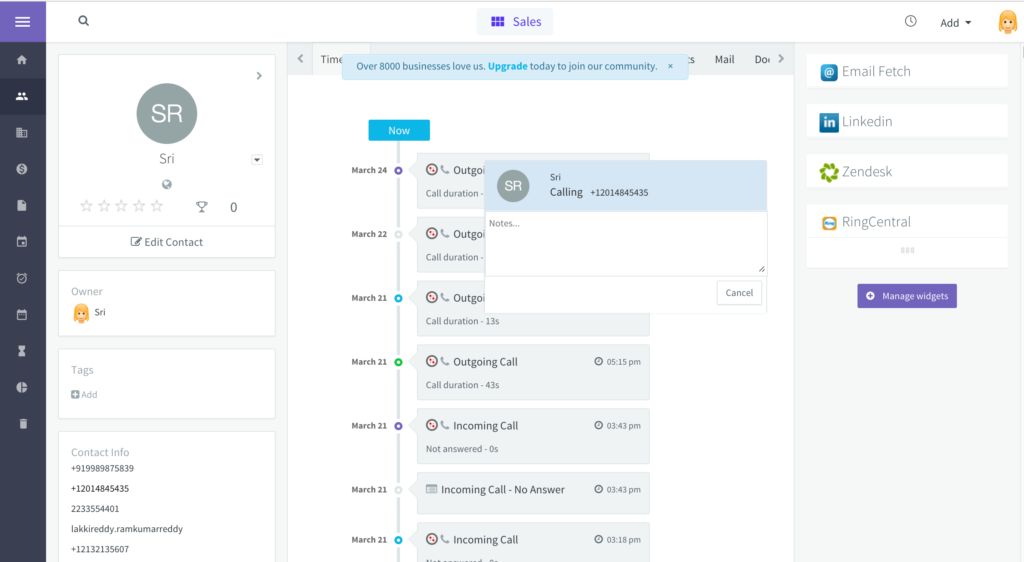Despite popular belief (and what popular movies often show us), being a “good” salesperson doesn’t mean you have to be aggressive.
Proactive and persistent? Absolutely.
But the high-pressure, Wolf of Wall Street or Glengarry Glen Ross approach to sales?
Thankfully, it’s going the way of the dinosaur.
But don’t just take our word for it. 61% of consumers say that working with a non-pushy salesperson goes hand in hand with a positive experience.1
The same study notes that what buyers want the most is a salesperson that actually listens to them.
Perhaps this explains the popularity of consultative selling.
In this guide, we’ll highlight how you can close more deals by acting as a helpful advisor to customers rather than someone chasing a sale:
- What is consultative selling?
- What are the benefits of consultative selling?
- What about the challenges with consultative selling?
- 8 ways to adopt consultative selling
- 15 examples of consultative selling questions
Up your sales game and close more deals with this free cold outreach playbook. ☎️
What is consultative selling, anyway?
Essentially, consultative selling is a sales strategy that involves acting as a consultant to your prospects, focusing on their individual problems and needs.
The concept behind consultative selling is simple: by serving as a helping hand and advisor to your customers, they’ll be more inclined to trust you and what you’re selling.
Rather than try to “push” your product on people, your conversations will naturally lead them to the conclusion that they need to make a purchase.
An alternative to consultative sales is value selling, which emphasizes features, benefits, and savings. Although value-based selling can be effective, it can often feel like you’re putting your product first and your customer second. On the flip side, consultative selling encourages reps to establish a relationship with their customers to understand their specific needs before recommending a solution.
What are the benefits of consultative selling?
Let’s look at some of the key benefits of consultative selling versus value selling below.
A consultative selling mindset naturally makes you seem less pushy
We can’t say it enough: pushy salespeople are a massive turnoff for the average consumer.
Studies show that way fewer salespeople (17%) think that they’re pushy compared to 50% of prospects who feel that those same salespeople are far too aggressive.2
The relationship between a salesperson and a prospect doesn’t have to be hostile.
With consultative selling, there’s less pressure on prospects to act immediately or rush into a decision. This gives you ample time to personalize your pitch and get to know their prospects before making a recommendation.
Consultative selling teaches you more about your target customer
Chances are you’re already familiar with the general struggles and pain points facing your prospects.
However, consultative selling encourages you to take a deeper dive into the specifics of their problems.
Why is your customer so stressed out? How much time or money are they wasting with your help?
Whereas value selling requires you to highlight the benefits of your product, empathetic selling puts your prospects’ needs front and center. Based on individual feedback, you can better learn how to position your product or service—and close the deal.
Consultative selling encourages you to be more proactive and focused
Winning sales shouldn’t be a matter of “spray and pray.”
Consultative selling requires reps to organize and personalize each pitch rather than hit their prospects with brute force cold calls and follow-ups.
Your prospects don’t want to feel like they’re just a number or a name on your list. Often, they don’t even want to be pitched. But if you are lucky enough to get them in a conversation, then you should do it right. Build a consultative relationship, and focus on tailoring the pitch to their needs rather than doing a one-size-fits-all pitch.
Okay, but what are the challenges of consultative selling?
The benefits and principles of consultative selling might seem straightforward.
So, why doesn’t every sales team adopt a consultative selling model? Consider some of the challenges below.
Consultative selling is inherently time-consuming
This is the big one. Tailoring each individual sales pitch means doing your homework. There’s a certain investment of time required to research prospects, craft messages, and actually conduct outreach.
But time is money. If you dedicate your time to researching and pitching prospects who never end up even responding, you’re less likely to hit your quotas.
For consultative selling to actually work, you have to find a balance between research and actually getting on a call.
(Don’t worry: we’ll cover those steps soon enough.)
Consultative selling demands highly skilled salespeople
Not just anyone can play the role of trusted advisor or consultant from the word “go.”
If your sales team is new to the concept of consultative selling or consider themselves more comfortable with value-based or product-oriented selling, making the switch can be a difficult transition given the legwork involved.
Consultative selling takes time to master
Piggybacking on the last point, it takes time to really understand the ins and outs of your customer base. And beyond just understanding their general needs, to be truly great at consultative selling, you need to be able to practice real empathy and know how to guide a conversation beyond a list of talking points.
The good news? Consultative selling can be taught, which leads us to our next section.
8 ways to master the art of consultative selling
Let’s say you want to learn, or train your reps, to take a more consultative approach to sales.
Nice! The good news is, this can be done without completely overhauling your sales team—granted you equip your reps with the right sales tools and tactics.
Below are a few fundamentals for adopting a more strategic consultative selling model over time.
1. Deepen your team’s customer and product knowledge
Perhaps one of the biggest benefits of consultative selling is that it offers a ton of freedom. No rigid scripts or mass canned messages required.
But! To take advantage of that freedom, you first need a deep understanding of what you’re selling—and who you’re selling it to.
First thing’s first: you need to give your reps a crash course in your product and competitive advantages.
Ideally, you already have some sort of knowledge base or educational resources available for your team to review (webinars, for example). You can also have new reps shadow more experienced ones or share examples of successful sales calls to “see how it’s done.”
Beyond that, consider putting together a customer persona that highlights your audience’s wants, needs, and desires. The more familiar your reps are with your business’s typical customer journey, the easier it is to truly help them as consultants.
2. Equip your team with resources to share with customers
Food for thought: B2B buyers spend the majority of their time conducting independent research before making any sort of purchasing decision.3
So much of consultative selling centers around educating your prospects and leads. Considering that it’s a given that your leads are going to do their homework before making a decision, it’s crucial that you provide them that much-needed education yourself.
For example, consider the following types of resources that people can review on their own time to familiarize themselves with what you’re selling:
- Product demo videos
- Webinars
- Blog posts
- Slideshow presentations
- Ebooks
Beyond the resources themselves, consider how communication tools can make it easier to share your materials. For example, a company selling software might want to run their prospects through a quick demo or screen-sharing session. You can do so in just a few clicks with a good video conferencing platform.
For example, RingCentral’s desktop and mobile app lets you share your screen with a prospect while on a video conference:
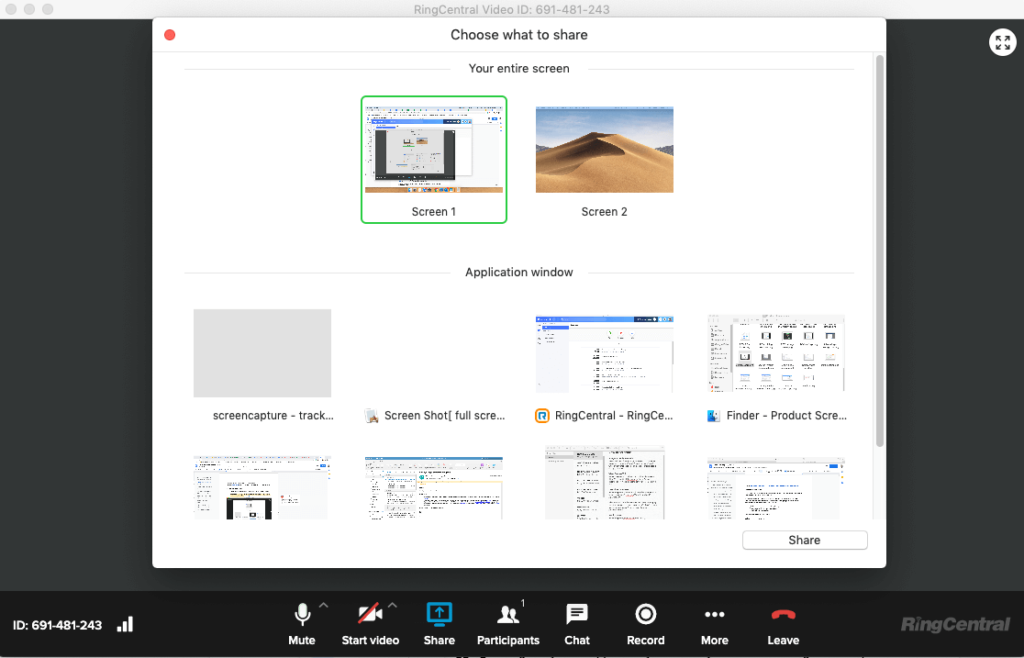
Oh, and they don’t have to download anything either. They can join your meeting from a web browser too, just by using the meeting link you send them:
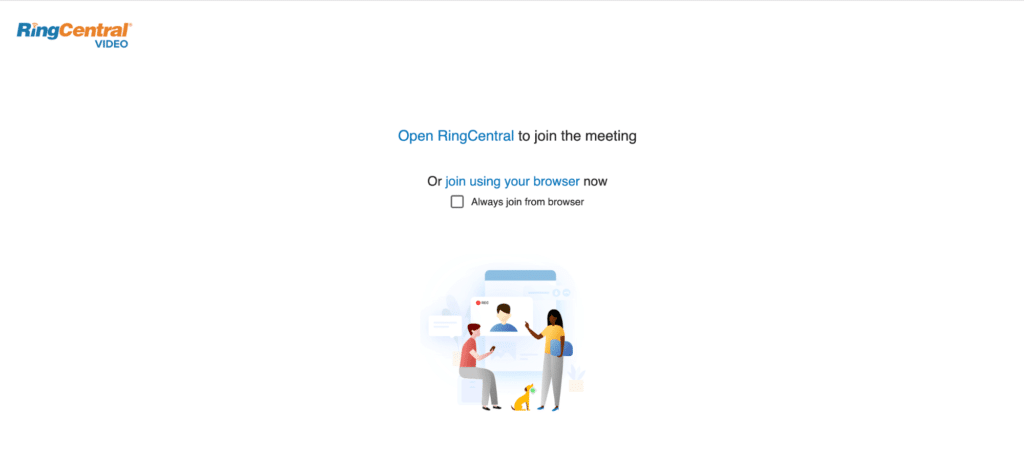
3. Log each and every customer concern, question, and interaction
Consultative selling is a learning process.
Each conversation, objection, and question can clue you in on how to better serve your future customers.
Logging your calls not only helps you organize your thoughts when dealing with multiple leads but also allows you to prioritize your follow-ups. It’s easy to lose track of past conversations otherwise.
This is where a CRM (customer relationship management platform) comes in handy, allowing you to automatically log your interactions and make notes about each and every person you talk to.
With a CRM, you can easily pick up wherever you left off in a conversation without missing a beat. Here’s an example of a customer profile in Agile CRM—notice how it integrates with tools like LinkedIn (to pull work information about your prospects from their LinkedIn profile) and RingCentral (to let you dial that prospect or take calls from them, directly in your CRM dashboard):
Not only that, RingCentral’s Outbound Contact Center platform also makes your job easier by logging scripts that you can pull up at a moment’s notice to riff off of, and even has a live coaching option if a new sales rep needs a little extra help:
4. Know when to hold off when it comes to talking about price
It might be tempting to start throwing numbers around early on during a sales call, but resist doing so upfront—unless, of course, your prospect is absolutely dead-set on talking about it first.
Remember: in general, your priority as a consultant should be to pick your prospects’ brains first.
Once they’re legitimately interested in your product and ask about pricing, that means you’ve done your job. Pushing pricing or offers too early could actually scare people away, especially if they feel like they’re still in the “just browsing” phase.
5. Make sure you’re communicating on your customers’ terms
Any sort of modern sales strategy, consultative or otherwise, requires meeting your prospects on their own terms.
Whether they want to talk exclusively over email or prefer video meetings, you should follow their lead when it comes time to get in touch. With tools like RingCentral, you can centralize all of your sales calls and communication regardless of whether you’re touching base via phone, video chat, or email.
You can even switch from a phone call to a video call (or vice versa) with just a click:
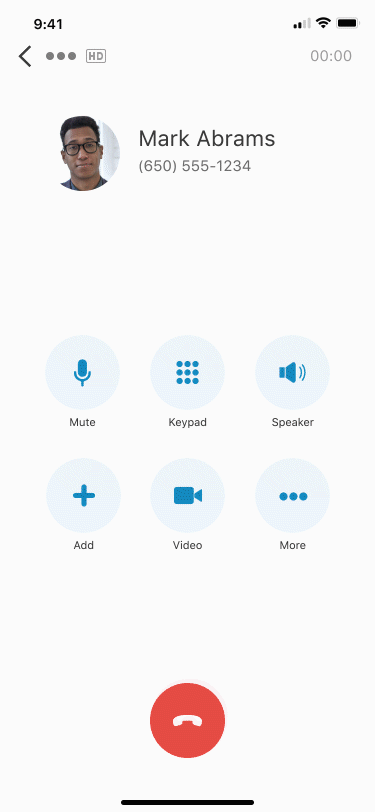
🕹️ Get a hands-on look at how RingCentral works by booking a product tour:
6. Eliminate your customers’ fears and doubts as they arise
Think about sales objections and leads that you’ve lost in the past.
Chances are those same issues are going to pop up again, right?
By anticipating peoples’ fears and doubts, you can start brainstorming ways to ease their minds.
For example, maybe you offer a premium solution with a price tag that freaks people out at first glance. Perhaps you have a competitor that offers a cutting-edge feature that your customers keep asking for.
Either way, you need to have answers to these questions in the back of your mind before they come up in conversation.
7. Be empathetic and authentic
This might be cliche but consultative selling only really works when you show a legitimate interest in your prospects’ lives.
That means going beyond being just another faceless salesperson. In addition to showing empathy, putting a face to your company is a great way to make your efforts feel more personable. If possible, explore opportunities to communicate via video conferencing to build that human connection with your prospects—you’re a real person offering real solutions.
8. Streamline for your process for researching customers
Remember what we said earlier about consultative selling taking time?
Case in point, activities like qualifying and researching leads are among the most time-consuming for today’s sales teams.4
So, you need to explore ways to speed up these processes in addition to your usual outreach and follow-ups. There are plenty of sales enablement tools out there to help you gather instant information on your prospects to help you personalize your pitches.
Meanwhile, tools like RingCentral empower you to speed up your communication. For example, RingCentral’s many integrations allow you to click someone’s phone number to call them directly from your email inbox or CRM. This results in less wasted time since you don’t have to manually dial prospects every time:
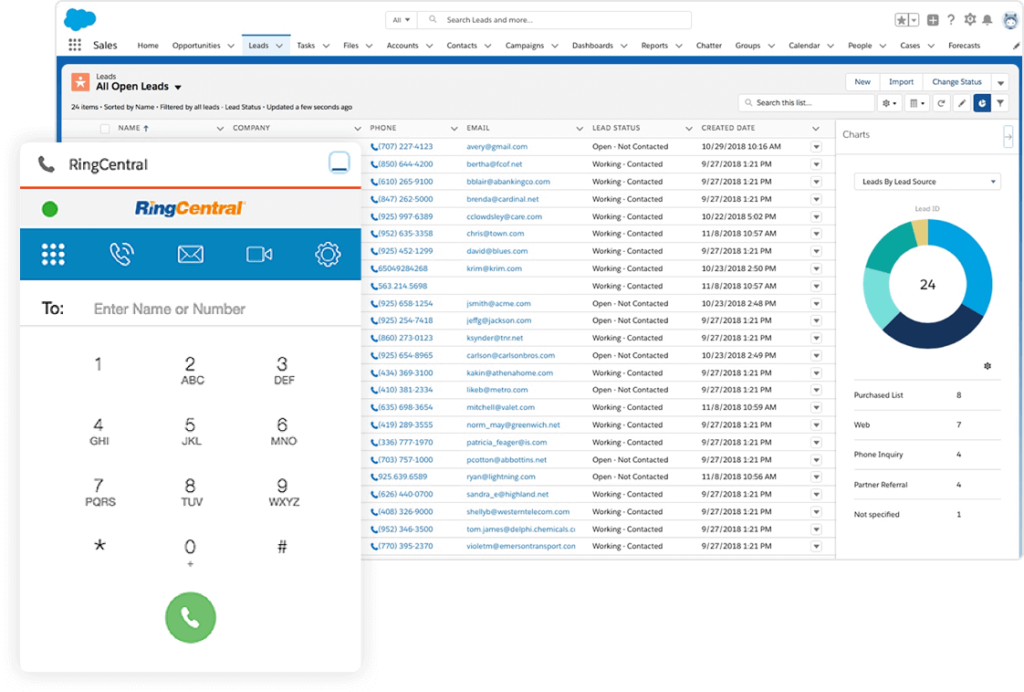
15 consultative selling questions to ask prospects and leads
What is a consultative sales experience? At its core, it centers around asking and answering—the right—questions.
That’s why we put together this list of conversation-starters and consultative questions to help you get your foot in the door. Each of these questions can help you to not only get to the root of your prospects’ problems faster, but also inject some empathy into your discussion.
These lines can be for anything from your outreach emails and follow-ups, to your discovery calls and beyond.
1. What unique challenges have you [or your company] come across when it comes to [pain point]?
This question acknowledges that your prospect’s problems aren’t one-size-fits-all. This not only showcases your attention to detail but also sets up the specific issues plaguing your prospect.
2. “What values matter most to you [or your company]?”
Here you’re essentially getting to know your prospect. Asking about values proves that you’re interested in more than just dollars and cents.
3. “How have you struggled with [competing solution] in the past? What led you to them?”
The purpose of this question isn’t to trash your competitors, but rather highlight what you can do differently for your prospects if they choose your solution. Understanding what led someone to a competitor can further clue you in on their priorities.
4. “How might you envision using a solution like ours?”
This question helps make your product seem more tangible. Based on their needs, you can drive home how your product would be the perfect fit.
5. “What are your (personal or professional) goals? What’s holding you back from those goals?”
Here’s another question that lets you take a stake in your prospects’ well-being beyond a sale. Based on their answer(s), you can likewise share examples of how you’ve helped others reach similar goals.
6. “What does the picture-perfect onboarding process look like to you?”
This is another subtle tactic to encourage your prospect to see themselves as an actual customer. The smoother you can make the onboarding process, the better.
7. “What can I do to make our next meeting/conversation successful?”
Your goal here is to prove that you want to go the extra mile to make your next meeting work and not waste your prospects’ time. Even if they don’t have an answer for this, simply asking shows that you’re acting in good faith.
8. “How do you feel about everything we’ve discussed so far?”
A quick gut-check never hurts. Open-ended questions like this can help lead to potential doubts or concerns that haven’t yet been brought up.
9. “What have you tried in the past to solve [pain point]?”
This sort of diagnostic question highlights your prospects’ level of sophistication when it comes to your product or solution. For example, if they’ve been working with a direct competitor for three years, they’re probably aware of what they’re looking for from you.
10. “Our clients have historically struggled with [pain point X, Y and Z]. Does that sound familiar to you?”
This “yes” or “no” question not only helps you understand what your customers are struggling with, but also that you’re a problem-solver that’s familiar with the right solutions for them.
11. “What will happen if you don’t resolve [pain point]?”
Another question to show that you’re invested in your prospects’ problems. Highlighting consequences can serve as a reminder as to why someone needs to work with you ASAP.
12. “How long do you have to solve [pain point]?”
Here you create a sense of urgency that encourages both parties to get moving to figure out if working together makes sense.
13. “What does a successful partnership look like to you?”
Another open-ended question, here you’re able to understand if your prospect considers themselves independent or might need some hand-holding. Either way, this allows you to better temper your expectations.
14. “What can I do to make you more comfortable about [sales objection]?”
Again, one of the keys to consultative selling is not being overly aggressive. This question can help you overcome roadblocks when it comes to your price point or a specific feature. From here, your job is to reassure them.
15. “How has your problem changed since we last spoke?”
This is a great question for opening up a follow-up or check-in, highlighting that you haven’t forgotten about their concerns and are available to help.
Does consultative selling make sense for your sales team?
If you’re looking for an approach to sales that involves less aggression and more relationship-building, consultative selling can do the trick.
With the principles and tactics above, you’re now better equipped to advise your prospects.
Meanwhile, tools like RingCentral are crucial for streamlining communication and getting in touch with your customers through every step of the sale process.
1blog.hubspot.com/sales/buyers-speak-out-how-sales-needs-to-evolve
2blog.yellowstep.co.uk/sales-insights-that-will-help-you-sell-smarter-infographic
3gartner.com/en/sales/insights/b2b-buying-journey
4pipedrive.com/en/blog/state-of-sales
Originally published Oct 01, 2020, updated Dec 30, 2022


